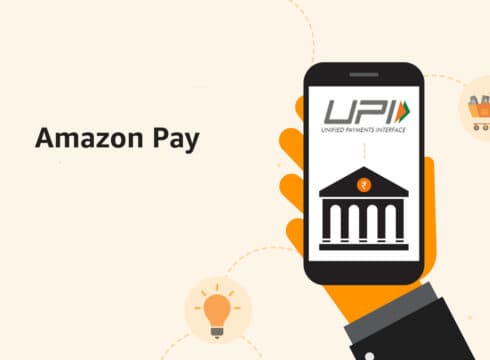In February 2019, Amazon Pay began issuing @apI handles
Earlier, it was providing payment services via BHIM app on UPI
The consumers are already using Amazon pay services
Inc42 Daily Brief
Stay Ahead With Daily News & Analysis on India’s Tech & Startup Economy
Amazon Pay has finally marked its entry in the Indian peer-to-peer (P2P) transaction market. The announcement came almost two months after the company went live on UPI in partnership with Axis Bank. The Indian payment subsidiary of global ecommerce major Amazon has also begun issuing @apl handles.
While Amazon Pay’s entry in UPI payments has been delayed by almost one year due to the data localisation and data privacy regulations, the company has been providing online payment services via BHIM app on UPI.
The consumers are already using Amazon pay services for online shopping, bill payments, recharges, scan and in offline transactions. “Now, one can transfer through the virtual ID, through bank account details as well. We will store the recently-done transactions which will make it easier for the user to make recurring payments,” said Vikas Bansal, director for Amazon Pay, India.
Amazon Pay further claims that 80% of its transactions come from beyond Tier 1 cities and that its payments technology has a 2 to 3 percent higher success rate than industry standards.
Key Events In Amazon PayJourney In India
- October 2014: Amazon introduces ‘Pay with Amazon’ service in India, based on stored credit/ debit card information on ecommerce platform
- March 2016: Applied for a semi-closed wallet license with the RBI, which it received a year later
- December 2016: Launched Pay Balance, a payment option similar to mobile wallets but limited to transactions within the platform
- April 2017: Amazon India secured a licence from the RBI to operate a prepaid payment instrument (PPI)
- January 2019: starts rolling out doorstep know-your-customer (KYC) services for its mobile wallet users.
UPI Boom In India
The demonetisation drive in November 2016 encouraged Indian consumer towards digital payments. However, UPI has been the revolution which has led the entire community of consumers, regulators, payment processors and banks towards the digital transformation.
The platform conducted 620 Mn transactions worth over one trillion in December 2018. This number is increasing further as UPI recorded a total of 672.75 Mn transactions on its platform in January 2019.
Not only this, brands like Ola and Uber are now also issuing their UPI handles. Paytm, PhonePe, Google Pay, Freecharge, Mobikwik, HDFC PayZapp, ICICI Pocket are already the leading players on the UPI platform.
In October 2018, the National Payments Corporation of India (NPCI) has also reduced the maximum number of P2P (peer-to-peer) transactions to 10 per bank from 20 previously, with an aims to encourage genuine transactions in the UPI ecosystem and bring in rationality in the space.
“In 2019, UPI 2.0 is bound to become mainstream – it will not only drive larger transaction volumes but also significantly increase P2M adoption,” said RazorPay CTO Shashank Kumar in a recent article on Inc42.
P2P Payments On UPI Surging Ahead
The upcoming opportunity in digital payments space is huge. The mobile payment industry in India is expected to record a CAGR of 22.0% to reach $1.2 Tn by 2025. The mobile wallet payment segment in value terms increased at a CAGR of 21.8% during 2018-2025.
In the P2P money transfers segment, the transaction value is expected to show an annual growth rate (CAGR 2019-2023) of 19.0% resulting in the total amount of $2.24 Bn by 2023. Also, the number of users is expected to amount to 1.9 Mn by 2023, according to research firm Statista.
Despite the initial doubts, P2P transactions have already made their way into the Indian consumers’ daily transactions bucket. According to reports, NPCI is working on two developments– UPI 2.0 and Proximity payments. This is further expected to push Indian merchants to adopt UPI.
Both UPI 2.0 and proximity payments would remove the manual typing of merchant code or number before making payments. UPI 2.0 will also offer features like Aadhaar-based payments, periodic payments of a pre-determined amount, scheduled payments, recurring payments among others. Similar features are already offered by digital payment players like Paytm. Also, with the upcoming WhatsApp Pay, the UPI platform is bound to break its transaction records in the coming years.
{{#name}}{{name}}{{/name}}{{^name}}-{{/name}}
{{#description}}{{description}}...{{/description}}{{^description}}-{{/description}}
Note: We at Inc42 take our ethics very seriously. More information about it can be found here.


